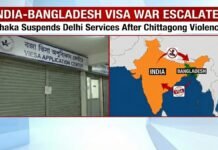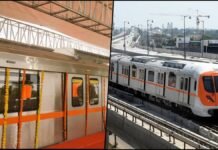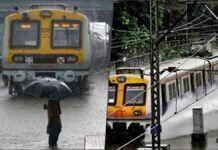
Key Points
- 443 fatalities recorded on Central Railway between January and May 2025 majority caused by track crossing and falling off overcrowded trains.
- Mumbai High Court ordered Central Railway to submit a detailed accident report after the deadly Mumbra incident in June 2025.
- Year-wise data from 2018 to 2025 exposes a persistent, high number of deaths, with no significant decline despite repeated safety measures.
- Main accident causes: encroachment, unsafe track crossing, and passengers losing balance while hanging on to overcrowded trains.
- Central Railway reached out to over 800 offices to alter working hours for decongestion, but with minimal visible impact so far.
Mumbai: The Central Railway has officially informed the Bombay High Court that 443 people have lost their lives in just the first five months of 2025 either by encroaching onto railway tracks, crossing unsafely, or falling off crowded local trains. This alarming figure was revealed in an affidavit submitted by the railway through advocate Anamika Malhotra, following the Court’s directive after the tragic Mumbra accident.
Year-on-Year Railway Fatalities: 2018–2025
The data submitted to the Bombay High Court exposes the relentless nature of railway accidents in Mumbai, as summarized below:
| Year | Deaths by Track Crossing | Deaths by Falling from Train |
|---|---|---|
| 2018 | 1,022 | 482 |
| 2019 | 920 | 426 |
| 2020 | 471 | 134 |
| 2021 | 748 | 189 |
| 2022 | 654 | 510 |
| 2023 | 782 | 431 |
| 2024 | 674 | 387 |
| 2025 (Jan–May) | 293 | 150 |
Total railway-related deaths in just the first five months of 2025: 443.
Recent Catastrophe: The Mumbra Incident
On June 9, 2025, the dangers of Mumbai’s overloaded suburban trains were again highlighted when eight passengers fell while two trains passed each other on a curve five lost their lives. Preliminary investigations revealed that passengers, standing perilously close to open doors due to overcrowding, lost their balance when the trains tilted. Many victims were not holding on to any support, amplifying the risk.
Why Are These Accidents Happening?
- Encroachment: People living or walking along the tracks expose themselves to lethal danger.
- Unsafe Track Crossing: Many risk crossing busy tracks illegally rather than using footbridges or subways.
- Overcrowded Trains: Extreme passenger density, especially during rush hours, forces commuters to stand at or hang from open doors.
- Poor Awareness/Enforcement: Many passengers are not fully aware of the risks, or disregard safety advisories and barricades.
Court Intervention and Official Response
The Bombay High Court, alarmed by repeated tragedies, directed Central Railway to provide a detailed report on all such accidents. The affidavit details not only the deadly statistics but also the corrective measures being attempted.
Measures Taken But Why Isn’t It Working?
In an unprecedented bid to reduce crowds, Central Railway reached out to more than 800 private companies, government offices, colleges, and banks, urging them to stagger working hours. While some organizations showed willingness, the overall impact on congestion and accident rates has been negligible.
Other preventive steps include:
- Awareness Drives: Campaigns urging passengers not to travel by hanging at doors or cross tracks.
- Enforcement: Periodic fines and patrols, but with limited staff and public compliance.
- Appeals for Infrastructure Changes: Requests for improved footbridges and more frequent trains, yet much remains to be implemented.
The persistent toll of fatalities on Mumbai’s Central Railway exposes a grave urban safety challenge. Despite legal orders and sustained administrative efforts, the combined problems of overcrowding, dangerous commuter practices, and infrastructure shortfalls continue to claim hundreds of lives annually. Without decisive action both on behavioral and systemic fronts, 2025 risks becoming yet another tragic chapter in Mumbai’s railway history.



















































